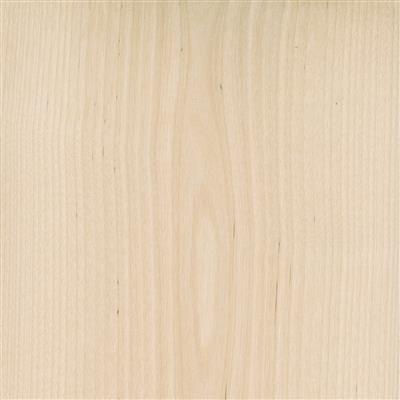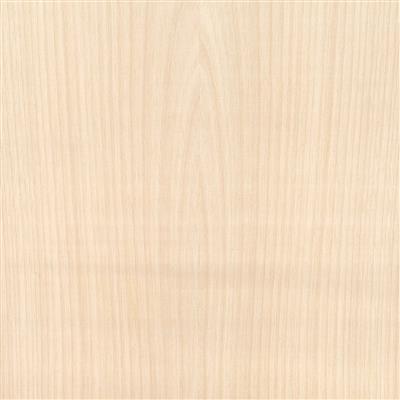Veneer Birch sliced 0.56 mm
The colour of the sliced birch is yellowish or reddish-white to light brown and has a slight silky sheen. The reddish-brown pith flecks set individual accents; these are visible as longer stripes on the wood. The annual rings are more or less separated from each other and form a fine, relatively even, decorative pattern tangentially on the wood.
Trade names and other names
Abbreviation DIN EN 13556: BTXX
Botanical name: Betula pendula, Betula pubescensvenosa
German: Birke gemessert, Messerbirke, Hängebirke, Sandbirke, Weissbirke, Gemeine Birke, gewöhnliche Birke
English: Sliced Birch, Sliced Silver Birch, Sliced European White Birch, Sliced Weeping Birch
French: Bouleau tranché, Bouillard tranché, Bouleau blanc tranché
Italian: Betulla finlandese, Betulla bianca
Spanish: Abedul común, Abedul de Europa, Abedul verrugoso, Abedul péndulo
Portuguese: Vidoeiro-branco
Dutch: Europees berken, Ruwe berk
Technical wood properties
Weight fresh/green: 800 -900 kg/m³
Bulk density air-dry (12-15% u): 510 830 kg/m³
Tensile strength: 7.0 N/mm²
Compressive strength: 38 - 100 N/mm²
Flexural strength: 76 - 155 N/mm²
Shear strength: 12 - 14 N/mm²
Hardness according to Brinell BII: 48 N/mm²
Hardness according to Brinell: 22 - 49 N/mm²
Differential shrinkage (radial): 0.18 - 0.24%
Differential shrinkage (tangential): 0.26 - 0.31%
Natural durability (DIN-EN 350-2): 5, not durable
Values of the technical properties of a wood species refer to a wood moisture content of u ≅12% to 15%. Data without guarantee.
Occurrence
The birch grows throughout Central and Northern Europe and the northern part of Asia.
Trunk and bark
In favourable locations, the birch can reach 30 m and a diameter of 30 to 80 cm, but generally the diameter is rather small. The trunk is straight and well grown and up to 10 m knot-free in the birch. The bark is milk-white and comes off in thin transverse bands. With age, the bark of the birch becomes spotty and thickly barked.
Characteristics and wood colour
Pores scattered, small to medium sized. Annual rings only visible in cross-section. The fine medullary rays are visible as small mirrors in radial section and the vessels as fine lines in birch. The wood of the birch is light yellowish, reddish towards the pith, slightly shiny.
Substitute woods
Maple, Aningré, Hornbeam, Limba, Beech
Literature
- Wood Atlas | 6th edition in 2006 | Rudi Wagenführ
- Wood science volume 1-3 | 1982 | Hans Heinrich Bosshard
- Properties and core sizes of wood species | 1989 | Jürgen Sell / Lignum Switzerland
| Category | Veneers |
| Product group | Veneers sliced |
| Thicknesses | 0.56 mm |
| Weight kg/m2 | 0.400 |
| Specie | Birch |
| Botanical name | Betulla spp. |
| Wood type | Hardwood |
| Main occurrence | Europe |
| Wood origin | Estonia | Latvia | Lithuania | Austria | Switzerland |
| Manufacturing/origin | Central Europe | Northern Europe |
| Certification | not certified |
| Colour | light-brown |
| Hue | clear |
| Use | furniture |
| Customs tariff number | 44089000 |
| Packaging | in bundle, approx. 24-32 sheets |
| Items on stock | yes |
| Date of delivery | approx. 3 - 6 working days |
| Postal shipping | nein |

 Deutsch
Deutsch
 Français
Français
 Italiano
Italiano
















